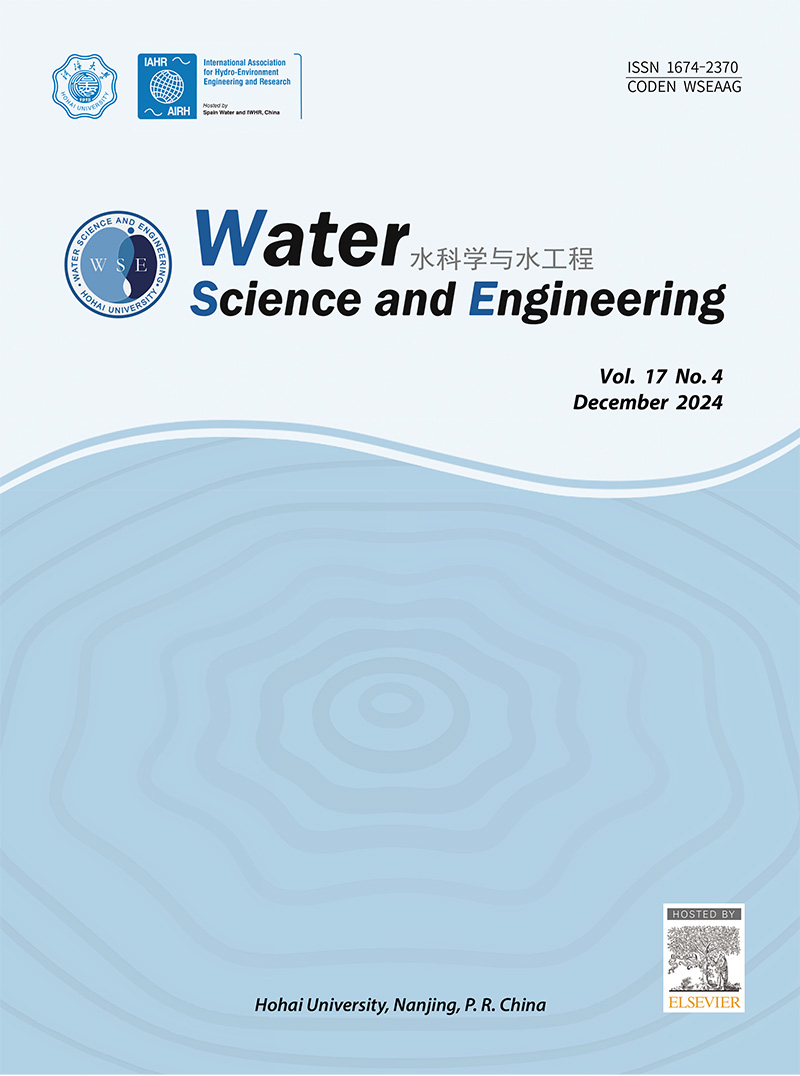Evaluation of treatment and energy efficiencies of an advanced electrochemical system for Chlorella removal equipped with aluminum, graphite, and RGO nanoparticles-coated cathodes
IF 4.3
Q1 WATER RESOURCES
引用次数: 0
Abstract
Advanced material sciences and technologies can help to address environmental challenges in order to achieve sustainable development goals by developing innovative materials capable of mitigating energy consumption in treatment systems. In this study, an innovative electrocoagulation unit for algae removal was optimized, and the effects of various variables, including novel cathode materials (i.e., graphite and reduced graphene oxide nanoparticles), on treatment efficiency and energy consumption were evaluated. Reduced graphene oxide nanoparticles were synthesized and then immobilized on the graphite cathode surface with the modified Hummer's method. Stabilization of nanoparticles was achieved with polytetrafluoroethylene. The use of the reduced graphene oxide nanoparticles-coated cathode led to a significant decrease (42.93%) in energy consumption, compared to the case with an aluminum cathode. In the optimum conditions (a current density of 3 mA/cm2, an electrolyte concentration of 2 g/L, an electrode surface area of 56 cm2, a processing time of 60 min, and a sedimentation time of 30 min), the novel electrocoagulation unit, equipped with an aluminum anode and a reduced graphene oxide nanoparticles-coated cathode electrode, achieved removal efficiencies of 72.69% for Chlorella species and 72.96% for turbidity.
评估采用铝、石墨和 RGO 纳米粒子涂层阴极的先进电化学系统去除小球藻的处理效率和能源效率
先进的材料科学与技术有助于应对环境挑战,通过开发能够降低处理系统能耗的创新材料,实现可持续发展目标。在本研究中,对用于去除藻类的创新电凝装置进行了优化,并评估了包括新型阴极材料(即石墨和还原氧化石墨烯纳米颗粒)在内的各种变量对处理效率和能耗的影响。首先合成了还原氧化石墨烯纳米粒子,然后用改进的汉默法将其固定在石墨阴极表面。纳米颗粒的稳定是通过聚四氟乙烯实现的。与使用铝阴极的情况相比,使用还原氧化石墨烯纳米颗粒涂层阴极可显著降低能耗(42.93%)。在最佳条件下(电流密度为 3 mA/cm2、电解质浓度为 2 g/L、电极表面积为 56 cm2、处理时间为 60 分钟、沉淀时间为 30 分钟),配备铝阳极和氧化石墨烯纳米颗粒涂层阴极电极的新型电凝装置对小球藻的去除率为 72.69%,对浊度的去除率为 72.96%。
本文章由计算机程序翻译,如有差异,请以英文原文为准。
求助全文
约1分钟内获得全文
求助全文
来源期刊

Water science and engineering
WATER RESOURCES-
CiteScore
6.60
自引率
5.00%
发文量
573
审稿时长
50 weeks
期刊介绍:
Water Science and Engineering journal is an international, peer-reviewed research publication covering new concepts, theories, methods, and techniques related to water issues. The journal aims to publish research that helps advance the theoretical and practical understanding of water resources, aquatic environment, aquatic ecology, and water engineering, with emphases placed on the innovation and applicability of science and technology in large-scale hydropower project construction, large river and lake regulation, inter-basin water transfer, hydroelectric energy development, ecological restoration, the development of new materials, and sustainable utilization of water resources.
 求助内容:
求助内容: 应助结果提醒方式:
应助结果提醒方式:


